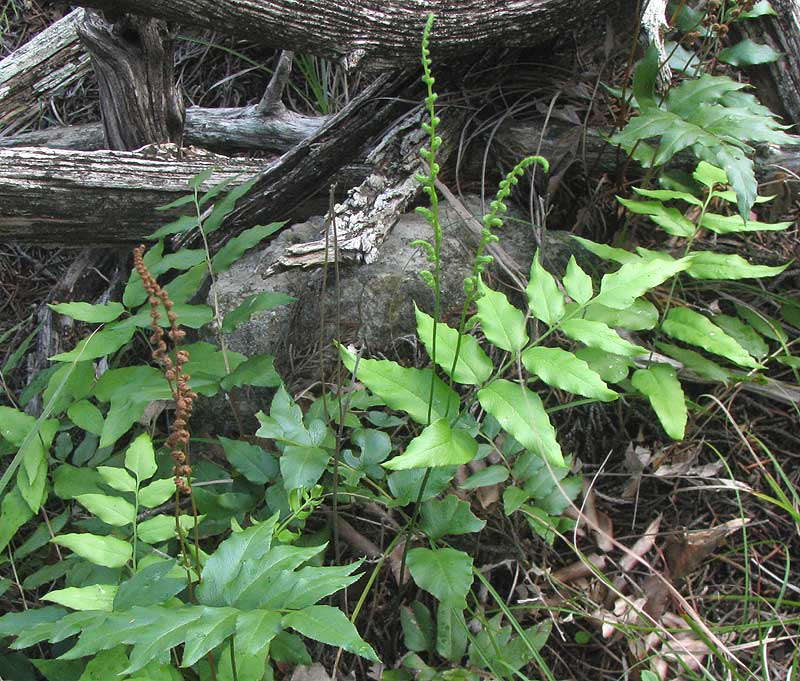Excerpts from Jim Conrad's
Naturalist Newsletter

from the October 7, 2012 Newsletter issued from the valley of the Dry Frio River in northern Uvalde County, southwestern Texas, on the southern border of the Edwards Plateau; elevation ~1750m (~5750 ft); N29.62°, W99.86°; USA
FLOWERING FERN
Toward the top of the limestone hill in front of the cabin there's a population of the unusual ferns shown above.
The most curious feature about this species is that arising from the juncture of the stem and the compound blade there are two upright spore-producing structures, not one.
This fern species is known in English by two names that are equally uninspired and misleading. One name is Flower Fern, which is an oxymoron, since all ferns reproduce with spores, thus none ever flowers. The other name is Mexican Fern, even though many fern species besides this one occur more in Mexico than the US. It's ANEMIA MEXICANA, and one wonders why such a nice fern would belong to a genus called Anemia. Well, the name is based on the Greek aneimon, which means "without clothing," referring to the absence of blade tissue associated with the spore-producing sporangia.
Anemia mexicana occurs throughout much of arid northern Mexico, but in the US is found only on lightly shaded limestone outcrops of southwestern Texas's Edwards Plateau.